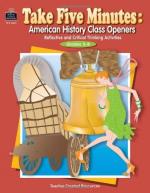|
This section contains 1,603 words (approx. 6 pages at 300 words per page) |

|
Performances. Minstrel shows, performed by white actors in blackface, were a uniquely American form of entertainment that drew on adaptations and parodies of European American and African American culture displayed through caricatures of Northern and Southern black men. The first recorded example of a white performer borrowing black material dates to 1822, when the Englishman Charles Mathews visited the United States to study African American dialect. Mathews claimed to have seen an audience demand that a black actor, portraying Hamlet, stop in the middle of a soliloquy to sing "Possum up a Gum Tree." Mathews used the incident in his blackface act. Similarly, in 1828 Thomas D. Rice, who would become one of the nation's premier blackface actors, happened to hear an old man singing to himself and dancing awkwardly. The song Rice heard, "Jump Jim Crow," became a popular standard of minstrelsy and was incorporated...
|
This section contains 1,603 words (approx. 6 pages at 300 words per page) |

|




